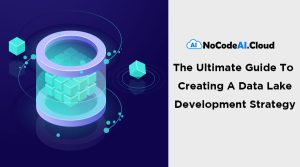Introduction
One of the key challenges facing businesses and organizations today is data overload. With so much data being generated daily, it can be difficult to determine which data is most valuable for business decision-making. Synthetic data generation is a process that helps overcome this challenge by creating artificially generated data sets. The benefits of synthetic data generation for AI and machine learning include improving performance, detecting bias, and saving time and money.
Synthetic data is important for AI and machine learning because?
There are many reasons why synthetic data is important for AI and machine learning. One reason is that it can help with data augmentation, which is the process of increasing the amount of data available for training by artificially generating new data points. This is important because more data generally leads to better results with machine learning algorithms.
Another reason why synthetic data is important is that it can be used to generate data that is representative of the real world, which is important for training machine learning models that will be deployed in the real world. This is especially important for data-hungry deep learning models. One of the key advantages of synthetic data is that it can be used to generate data that is representative of the real world.
Synthetic data can help to improve the accuracy of predictions
The accuracy of predictions can be improved by using synthetic data. Synthetic data is data that is generated by artificial means, rather than being collected from real-world sources. When creating predictive models, it is often helpful to use synthetic data to improve the accuracy of predictions.
Predictions are often based on data that is collected from real-world sources. However, this data may be incomplete or contain errors. Using synthetic data can help to improve the accuracy of predictions by providing a more complete and accurate dataset. Often, predictions are based on data that is collected from real-world sources.
Synthetic data can be generated using a variety of methods, such as statistical models, machine learning, and artificial intelligence. The generation of synthetic data has become an important tool for researchers in many fields.
Synthetic data can help to reduce bias in AI and machine learning models
Bias in AI and machine learning models can have far-reaching and often negative consequences. However, one way to help reduce bias is to use synthetic data.
Synthetic data is data that is generated by a computer program rather than being collected from real-world sources. It can be used to train machine learning models in a way that is more representative of the real world, and thus help to reduce bias.
There are several ways to generate synthetic data, and the most suitable approach will depend on the specific application. There are a variety of methods for creating synthetic data, each with its advantages and drawbacks.
Synthetic data can help to improve the efficiency of AI and machine learning algorithms
The use of synthetic data is a relatively new concept that has the potential to change the way AI and machine learning algorithms are trained. Synthetic data is data that is generated by algorithms instead of being collected from real-world sources.
There are several benefits to using synthetic data. First, it can be generated in large quantities very quickly. This is important because one of the main bottlenecks in training machine learning models is the lack of high-quality training data. Second, synthetic data can be generated to be very similar to the real-world data that the model will be used, which can allow the model to be trained and tested on synthetic data that is much more similar in distribution to the real-world data.
How Can Synthetic Data Help Computer Vision?
Synthetic data can be a very helpful tool for computer vision applications. It can help to train and test algorithms with a wide variety of data, without the need for expensive and time-consuming data collection. Additionally, it can be used to create data that is not available in the real world, which can be very helpful for testing edge cases or developing new algorithms.
Synthetic Data Challenges
Synthetic data is a big challenge for machine learning. The biggest challenge is that it can be hard to get right. There are a few ways to create synthetic data, but the most common is to use a generative model. A generative model is a model that can generate new data that looks similar to the data it was trained on.
The challenge with synthetic data is that it can be easy to overfit the data. Overfitting is when a model is too closely fit to the data it was trained on, and does not generalize well to new data.
Conclusion
This article explored the benefits of synthetic data generation for AI and machine learning. Synthetic data is artificial data that is created to simulate real-world data. It is used to train and test AI models. Because synthetic data is predictable, it can be used to avoid the pitfalls of real-world data. Follow us at info@nocodeai.cloud to stay up-to-date on the latest in AI and machine learning.
Once a WebApp is developed the most difficult part is to populate the initial data into the webapp with realistic data for site demonstration and testing. NoCodeAI.Cloud teams can provide synthetic data for the WebApp based on your specific requirements and use case and deliver it fast to give you a real App.
NoCodeAI.Cloud is a US based company that is managed by a team of High level professionals with 60 plus years’ experience in Enterprise Data management, Cloud services, Artificial Intelligence, Machine Learning, Deep Learning, Business Process Development, Agile DevOps and the latest cutting edge technology in Robotic Process Automation (RPA) and HyperAutomation (HA).



